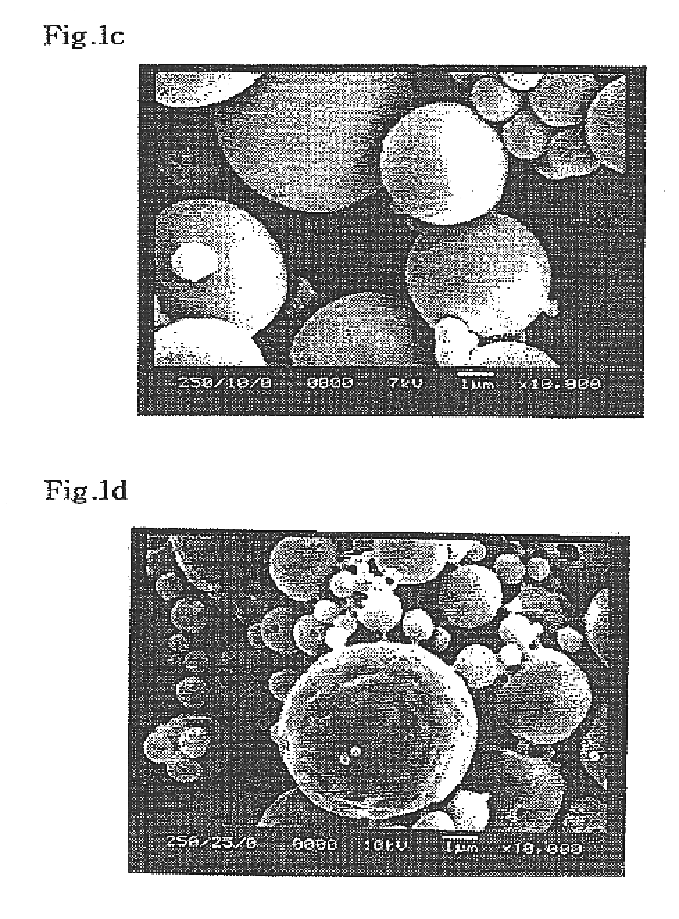Controlled drug release system of retinoic acid
- Summary
- Abstract
- Description
- Claims
- Application Information
AI Technical Summary
Benefits of technology
Problems solved by technology
Method used
Image
Examples
example 1
Synthesis of Polymeric Surfactant
1.1. Synthesis of Poly-L-lactic Acid-polyethyleneglycol Di-block Copolymer
Poly-L-lactic acid-polyethylene glycol di-block copolymer used as the polymeric surfactant (DiPLE) was synthesized by ring opening polymerization of L-lactide using mono-methoxy polyethyleneglycol as the initiator. L-lactide was recrystalized twice from ethyl acetate and monomethoxy polyethyleneglycol was used after drying under reduced pressure at 60.degree. C. for 8 hours.
First, 6.507 g of L-lactide, 2 g of monomethoxy polyethyleneglycol(Mn 5,000), and 45 ml of toluene were poured into a three-necked flask equipped with stirrer, nitrogen inlet and reflux condenser and heated at 70.degree. C. until two reactants are completely dissolved into toluene. Continuously, 65 mg of catalyst, stannous octoate was added into the flask and the solvent, toluene was refluxed at 110.degree. C. for 24 hours. After removing the solvent under reduced pressure, the resulting product was dissolve...
example 2
Preparation of Microsphere with Poly-L-lactic Acid-polyethylene Glycol Di-block Copolymer (DiPLE)
Microsphere was prepared from poly-L-lactic acid(PLLA) and poly-L-lactic acid-polyethylene glycol di-block copolymer (DiPLE) by the oil-in-water (O / W) emulsion solvent evaporation method which is conventionally used in the hydrophobic drug manufacture.
In order to determine the optimum content of polymeric surfactant, DiPLE obtained in Example 1 within microsphere, the morphology of microsphere was observed according to the mixing ratios of DiPLE.
First, 250 mg of poly-L-lactic acid and DiPLE(0, 2, 4, 6, 8, 10, 20 and 30 wt %) were dissolved into 5 ml of dichloromethane, and then subjected to homogenization at 24,000 rpm for 10 minutes with a homogenizer under vigorous stirring while injecting 40 ml of aqueous 2 w / v % polyvinyl alcohol solution with a needle gauge thereinto. Dichloromethane was evaporated for 2 hours at 40.degree. C. The microsphere formed by poly-L-lactic acid coagulation...
example 3
Preparation of Microsphere with Poly-D,L-lactic Acid-polyethylene Glycol Tri-block Copolymer (TriPLE)
Microsphere was prepared by the oil-in-water (O / W) emulsion solvent evaporation method. 200 mg of poly-D,L-lactic acid and the synthesized TriPLE(0, 5, 10, 15, 20, and 100 wt %) were dissolved into 5 ml of dichloromethane, and the organic solution was vigorously stirred(rpm 1,000) with a mechanical stirrer while pouring it into 200 ml of aqueous 2 w / v % polyvinyl alcohol solution. The subsequent procedures were followed by Example 2.
PUM
| Property | Measurement | Unit |
|---|---|---|
| Percent by mass | aaaaa | aaaaa |
| Mass | aaaaa | aaaaa |
| Mass | aaaaa | aaaaa |
Abstract
Description
Claims
Application Information
 Login to View More
Login to View More - R&D
- Intellectual Property
- Life Sciences
- Materials
- Tech Scout
- Unparalleled Data Quality
- Higher Quality Content
- 60% Fewer Hallucinations
Browse by: Latest US Patents, China's latest patents, Technical Efficacy Thesaurus, Application Domain, Technology Topic, Popular Technical Reports.
© 2025 PatSnap. All rights reserved.Legal|Privacy policy|Modern Slavery Act Transparency Statement|Sitemap|About US| Contact US: help@patsnap.com



